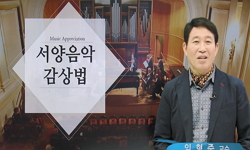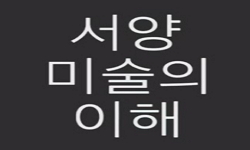Textual depiction and visual representation of Chinese Emperors` palace, or the Forbidden City, have long played a key role in defining Western perceptions of China. Since Marco Polo`s report of Kublai Kahn`s summer palace in Ciandu(Shangdu) and winte...
http://chineseinput.net/에서 pinyin(병음)방식으로 중국어를 변환할 수 있습니다.
변환된 중국어를 복사하여 사용하시면 됩니다.
- 中文 을 입력하시려면 zhongwen을 입력하시고 space를누르시면됩니다.
- 北京 을 입력하시려면 beijing을 입력하시고 space를 누르시면 됩니다.

1918년, 모두에게 열린 금성(禁城) ― 마르코 폴로에서 피에르 로티에 이르기까지 서양인의 눈에 비친 중국의 궁성(宮城) = 1918, The Forbidden City Opened to All ― Chinese Imperial Palace in Western Eyes, from Marco Polo to Pierre Loti
한글로보기https://www.riss.kr/link?id=A103335553
- 저자
- 발행기관
- 학술지명
- 권호사항
-
발행연도
2015
-
작성언어
-
-
주제어
서양 ; 문자기술 ; 시각재현 ; 오리엔탈리즘 ; 자금성 ; 마르코 폴로 ; 장-밥티스트 뒤 알드 ; 피에르 로티 ; 사무엘 웰스 윌리엄스 ; 《런던 화보》 ; 《하퍼 주간》 ; Western ; literal depiction ; visual representation ; Orientalism ; the Forbidden City ; Marco Polo ; Jean-Baptiste Du Halde ; Pierre Loti ; Samuel W. Williams ; the Illustrat
-
KDC
700
-
등재정보
KCI등재
-
자료형태
학술저널
-
수록면
185-224(40쪽)
- DOI식별코드
- 제공처
-
0
상세조회 -
0
다운로드
부가정보
다국어 초록 (Multilingual Abstract)
Textual depiction and visual representation of Chinese Emperors` palace, or the Forbidden City, have long played a key role in defining Western perceptions of China. Since Marco Polo`s report of Kublai Kahn`s summer palace in Ciandu(Shangdu) and winter palace in Khanbaliq(Dadu), the grandeur and beauty of Chinese Emperors` palace have long been a place of yearning for the Sinophiles of Europe. Polo`s account and attitude formed a set of archtypical ideas regarding Chinese palaces. Since Matteo Ricci first set foot on the grounds of Ming dynasty`s Forbidden City in the wake of 17th century, other talented Jesuits followed. Included in their reports on China were detailed description of the fortress palace where the “Son of Heavens” resided and ruled, which were edited and included in Jean-Baptiste Du Hales`s Description geographique, historique, chronologique, politique et physique de l`Empire de la Chine et de la Tartarie chinoise(1735). Although Jesuits` words were not as exaggerating as Polo`s, positive attitude towards the place remained unchanged. Even as basic knowledge of the palace were enhanced it was impossible for the Europeans to actually “see” the place through visual depiction since the very act of drawing the Forbidden City was strictly forbidden except on very special occasions approved by the Emperor.
As images and perceptions of China changed in Europe since the age of Enlightenment, overall from positive to negative, notions of the Forbidden City also shifted. While it`s grandeur was not totally denied, images of blood-red walls, dark dungeons, nightmarish labyrinth, and gloomy tombs were emphasized, as French naval officer and novelist Pierre Loti repeatedly describes in his Les derniers jours de Pekin(1902). At the same time the learned European keeps addressing himself as the “Western barbarian”, not being able to conceal his complex feeling towards the situation by which he was able to enter and tour the empty palace, where it`s occupants have fled from the attacking allied forces, probably the situation inevitably reminded him of the sacking and burning of Yuanmingyuan palace-gardens in 1860 by the Anglo-French forces.
When the Feb. 1st issue of the Illustrated London Journal reported the grand review of Chinese troops and Allied detachments from the Legation Guards that was held in the Forbidden City in celebration of Allied victory over Germany, and titled it as “Victory Day in Pekin : The Forbidden City Opened to All”, it implied a notion that the opening of the Forbidden City itself as the victory earned. Probably meaning that finally the Western eyes were able to “see” the place without the shame of giving in to condescending permission or guilt of using excessive force. Finally they would view the place in a “civilized” manner.
Orientalistic yearning, craving, contempt and fear of Chinese “Forbidden City” blended with knowledge of it accumulated through centuries constructed Western perception of the Chinese palace, which still have strong influence until present time. Moreover, more frequent interaction following the 1st Anglo-Chinese war, Western perception merged with traditional notion of Emperor`s palace that the Chinese and East Asians had.
동일학술지(권/호) 다른 논문
-
- 한국중국어문학회
- 한서영 ( Han Seoyoung )
- 2015
- KCI등재
-
현대 중국어 유의어 `원의(愿意)`와 `희망(希望)`의 비교분석
- 한국중국어문학회
- 홍연옥 ( Hong Yeonok )
- 2015
- KCI등재
-
- 한국중국어문학회
- 양중석
- 2015
- KCI등재
-
- 한국중국어문학회
- 류창교 ( Ryu Changgyo )
- 2015
- KCI등재




 KCI
KCI KISS
KISS






